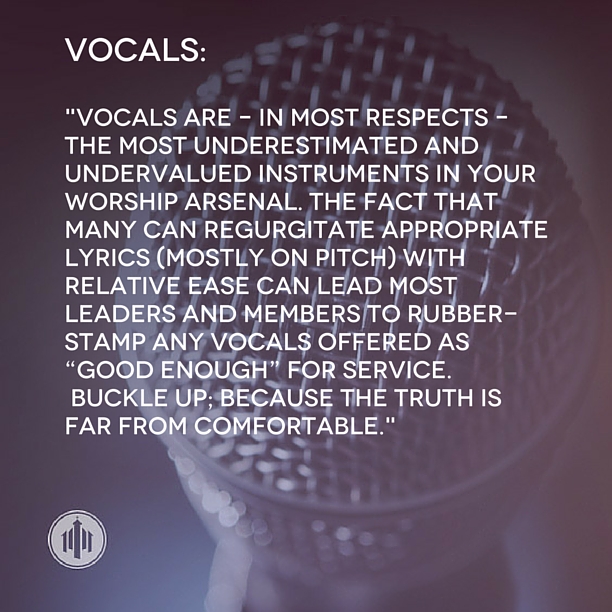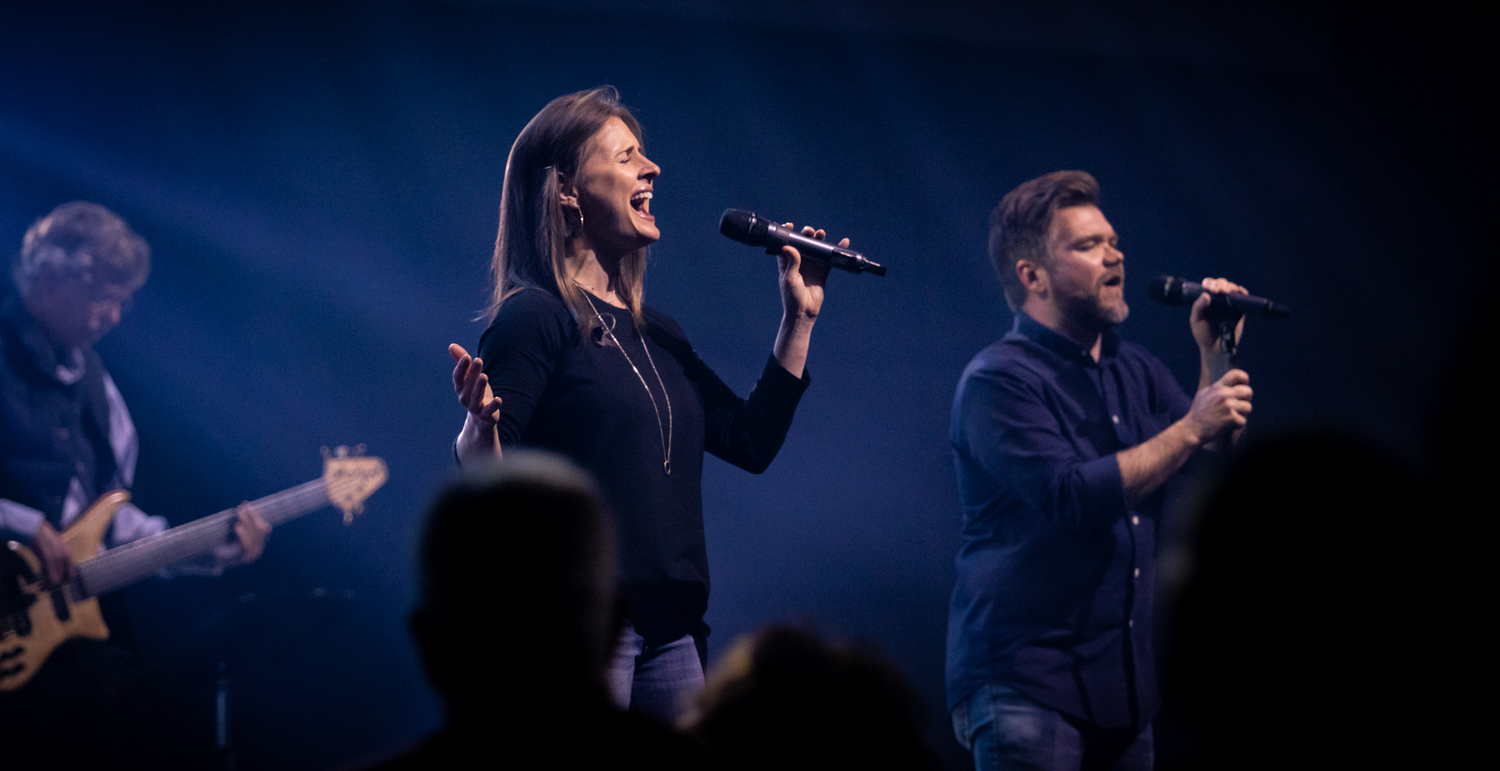Vocals are – in most respects – the most underestimated and undervalued instruments in your worship arsenal. The fact that many can regurgitate appropriate lyrics (mostly on pitch) with relative ease can lead most leaders and members to rubber-stamp any vocals offered as “good enough” for service. Buckle up; because the truth is far from comfortable.
While scripture calls for strings, tambourines, horns, and other instruments, He has reserved the voice as his special gift for us to praise Him. Only one instrument “sings”. We need to pay more attention to the importance of the voice – certainly more attention than simply “learning the words”.
The “Gang vocal” misconception:
Gang vocals (singing in unison or octaves) are for the congregation – plain and simple. Gang vocals coming from the worship team only enhance the subtle inaccuracies among shared melodic lines. When two people sing the exact same melodic line, it is impossible for them to reproduce an exact copy of every entrance, exit, enunciation, and pitch. Either member may produce an inspiring melody when singing alone, but together (in unison) their inconsistencies will clash and be received awkwardly. “Why is it ok for the congregation?” you may ask; the simple answer is that the unison voice of the congregation is 100% ambient – while the individual worship team members are amplified and specific. So bottom line is, “Don’t Gang”! Let the heart of the congregation sing in unison.
The “Full Frontal Harmony” misconception:
So you have a team that has 4 vocalists who are wizards at improve harmony? AWESOME! Don’t let them go! But I caution you to guide their craft. When we allow a full-on wall of harmony right from the first note sung; it may be stunning, but is it appropriate? Their role on worship team is to support the lead vocal – AND the song phrasing. When you relate the supportive vocalists’ job to instruments, you don’t hear the lead guitar go off on a bumblebee lead the entire song – or the drummer go into an “Oceans” percussive solo at the onset of every song. They altar their respective parts and entrances/exits to match the spirit of the song. The wise worship team would instead have the lead vocal field the first verse solo, then add an oblique (non-changing harmony line) on the next pertinent phrase, then layer the final harmony voice(s) on the chorus to magnify the spirit behind the melodic communication.
“Diction”-ary:
Truly effective supportive singers have an intrinsic passion for harmony. This passion is like popping the hood, diving into the engine, and feeling the appropriate ignition timing. If you want a team who has a passion for harmony, teach them how to blend not only in pitch and volume, but also “diction”! The way they pronounce the words lends an enormous impact to vocal and harmonic phrasing. Supportive vocal pros know how to soften entrances and exits, when to hold out vowels for major impact, how to adjust their timbre and color to compliment the lead vocal, and how to recognize appropriate diction! Have you ever heard someone sing the appropriate words – in the appropriate pitch – but are left feeling like there’s something wrong with the way they are singing? Some vocalists – either through instruction or by self-teaching – adopt a vocal style called “Parlando vocals”. Parlando singing uses diction closely related to speech. The results are often-times hard “r”s, harsh vowels, and general over-enunciation. A good method to correct this bad habit is to encourage them to sing with more of a “Proper English” accent – where their vowels aren’t so harsh and their “r”s aren’t so defined.
The major point we need to be more mindful of is that “Spiritual singing” – truly encouraging the congregation to invite God to sing through their hearts – involves a much deeper exploration and passion for the voice than merely having a few people on stage regurgitate lyrics.


